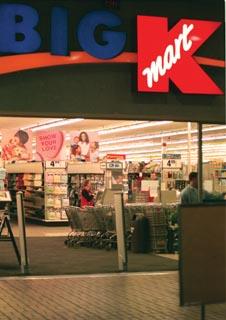Why SCM/IT Matters: The Fall of KMart
 Every corporation has to decide where it stands on the innovation curve.
Every corporation has to decide where it stands on the innovation curve.Companies can either adopt working technologies or create new ones.
TechConfidential has a great story this month on KMart and Walmart, two venerable companies that pursued completely different approaches to managing their inventory.
Retail is a bitch, as the less eloquent like to say.
In the 1990s, Kmart spent lots of money on technology that supported its "blue light special" business strategy, which promoted regular sales in order to draw customers.
As the TechConfidential report points out, what KMart didn't do was spend enough money on its supply-chain information systems.
Never a smart choice.
Without a sound supply chain management (SCM) infrastructure in place, KMart was unable to monitor sharp changes in sales volume that accompany promotion-driven stores.
For customers, that meant the cool gas grill they'd seen advertised in the local circular was out of stock by the time they made it to their neighborhood Kmart. Or maybe it was in stock, but not on the sales floor. For Kmart, the company's inadequate systems meant it didn't know what products its customers wanted, when they wanted them and how to get the items.With information technology en abstentia, it's no surprise that in 2002 the popular retailer went belly up.
Wal-Mart, in contrast, spent as much of its gargantuan budget on information technology as it did on marketing.
Walmart is truly a juggernaut.
Most people would call Walmart a retailer -- I like to think of Walmart as an information technology company.
Walmart thrives off automated product flow and precise inventory control.
And it does so through information technology (IT).
On any given day, Walmart can determine what type of soap its Hispanic American shoppers prefer and even tell you on what day of the week they'll most likely return for more.
Isn't that amazing?
By keeping up to date with technology and implementing operational strategies, companies benefit from bringing products to the marketplace on a demand-driven basis.
More often than not, this also results in a highter return on investment (ROI) for the companies who embrace technological innovation.
Supply Chain Management creates efficiency.
And efficiency leads to healthier bottom lines.
As cliched as it may sound, top line (revenue-fixated) driven companies are doomed to fail.
Just ask Walmart.
Last time I checked, Walmart stood as one of the largest corporations across the globe; KMart, on the other hand, imploded and was recently salvaged by a hedge fund (ESL) who merged the company with the equally struggling Sears.
<< Home